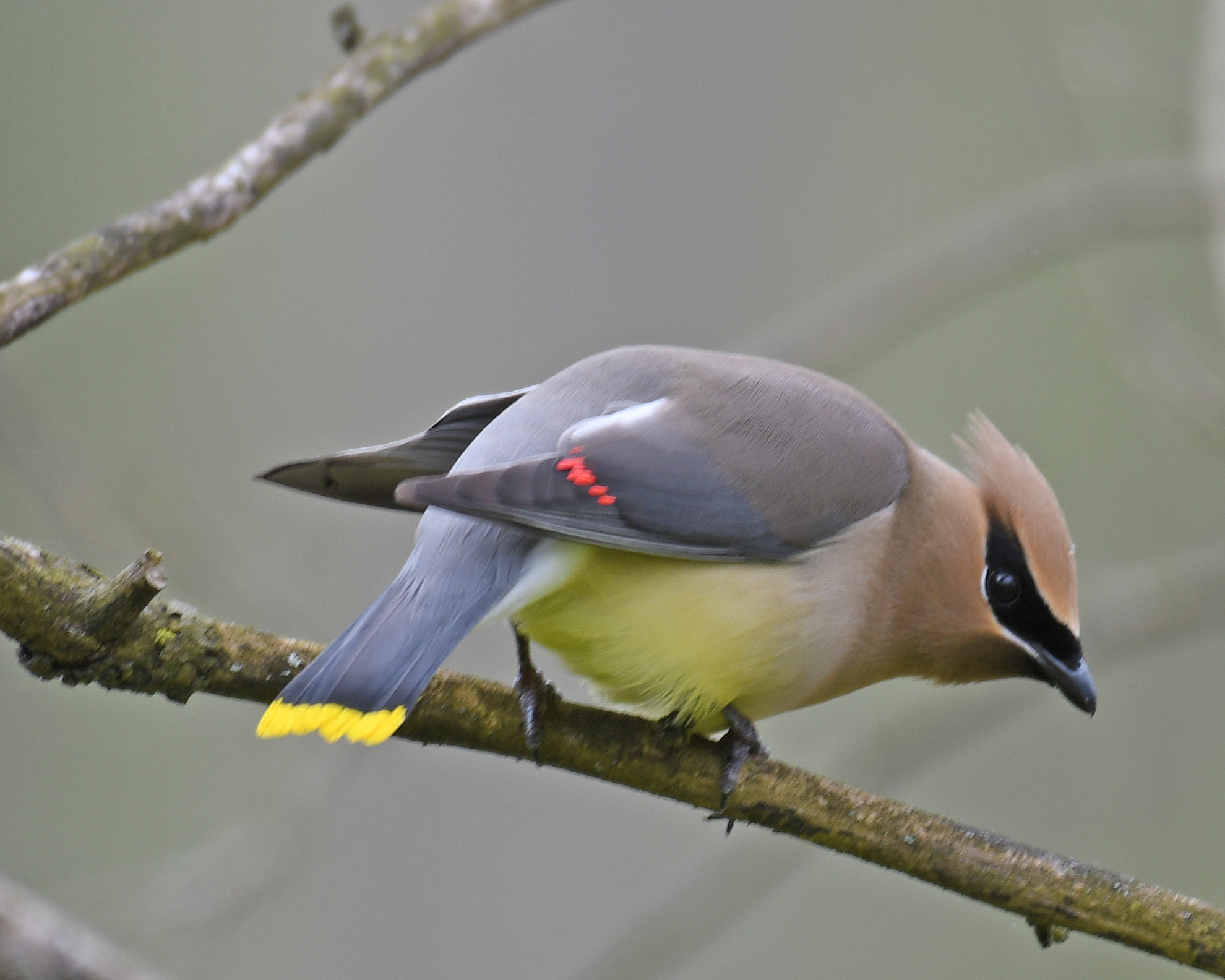On a cool morning in early October, Dave and I stopped to enjoy the soundscape on our morning walk. The crickets had center stage, but several birds weighed in as well. One high-pitched clear whistle followed by a high-pitched trill that sounded almost like a cricket came from what my Merlin Bird ID app told me was a cedar waxwing.
Like many birds, the cedar waxwing (Bombycilla cedrorum) is named for its particular traits. The cedar part comes from their penchant for eating the berries on our Eastern red cedars. The tree is actually in the juniper family and the berries have that taste that flavors gin. They actually eat all kinds of berries, including the berries on black nightshade. The poison doesn’t bother the birds even though it’s poisonous to humans. They also love the berries on the honeysuckle, juniper and dogwood growing on Owl Acres this time of year. Last summer they feasted on our cherries, raspberries, blackberries and mulberries.
The waxwing part of their name refers to waxy red tips on their secondary flight feathers. These brilliantly colored tips are created from secretions of a carotenoid pigment that comes from the red berries they eat. These waxy secretions widen and flatten the tips of the secondary flight feathers. The older the bird, the more red tips it will have. Ornithologists think these red tips are visual clues for birds when they’re choosing a mate. Older, more successful birds will have more red tips and can be expected to be better breeders. Red tips are common to both male and female birds.
The waxwing’s wings are broad and pointed–kind of like the wings of a starling and span 8 to 12 inches. The tail is short and squared off. The bill is relatively short and wide, and the head is large, on a short neck, and has a prominent feather crest, reminiscent of a cardinal. They weigh about an ounce apiece and size-wise land between a sparrow and a robin.
The cedar waxwing wears a black mask outlined in white. Its head and back are generally a light brown, and the wings are a light gray. The belly has a yellowish tinge, and under the tail is white. The tail feathers are usually tipped with yellow. An interesting phenomenon occurred in the northeast U.S. in the 1960s when birdwatchers began seeing cedar waxwings with orange tail tips instead of yellow ones. This was not a new subspecies, it turns out. It was the result of the birds eating the berries of a newly imported Morrow’s honeysuckle. Pigment from the berries made its way to the tail feathers if those tail feathers were growing at the time the bird was eating the berries. Another impact of introduced species on native populations.
Cedar waxwings are considered migratory birds, although they may stay here and overwinter on Owl Acres if there are enough berries to suit them. They spend their spring and summer in the northern U.S. and Canada, and in some years they might migrate as far as Costa Rica and Panama. If they decide to migrate, they will form into flocks that travel by day. If they discover a trove of berries, the flock will descend on the area and eat all the berries, then move on. Cedar waxwings don’t exhibit the migration patterns that many birds do. They don’t return to their ancestral locations and don’t even move to the same places each year. Some years large flocks of them descend into areas where they aren’t usually seen. Their stop and start patterns last into February before they turn around and head north to their breeding grounds. Up north, they’ll be looking for a variety of insects to provide them the protein they and their nestlings will need for a successful summer.
The birds we heard on our walk may be down from Canada, heading south. Or they may be sticking around, flavoring their gin with our juniper berries and spreading the seeds far afield. I’ll keep listening for them, and perhaps we’ll put out some berries this winter to entice them to the birdfeeder.
Photo by: lwolfartist (from Wikimedia Commons) Alt text: Rump-on view of a Cedar Waxwing displaying all the colorful markings of this beautiful songbird. Slate-grey back with tailfeathers tipped in bright yellow. Red tips of secondary flight feathers peek out from folded wings. Soft yellow green breast, salmon-brown head and feather crest, and a rakish, black bandit-mask with thin white outline.

1 comment